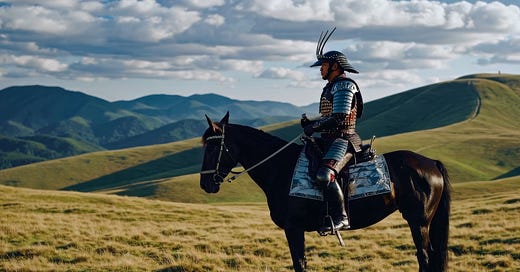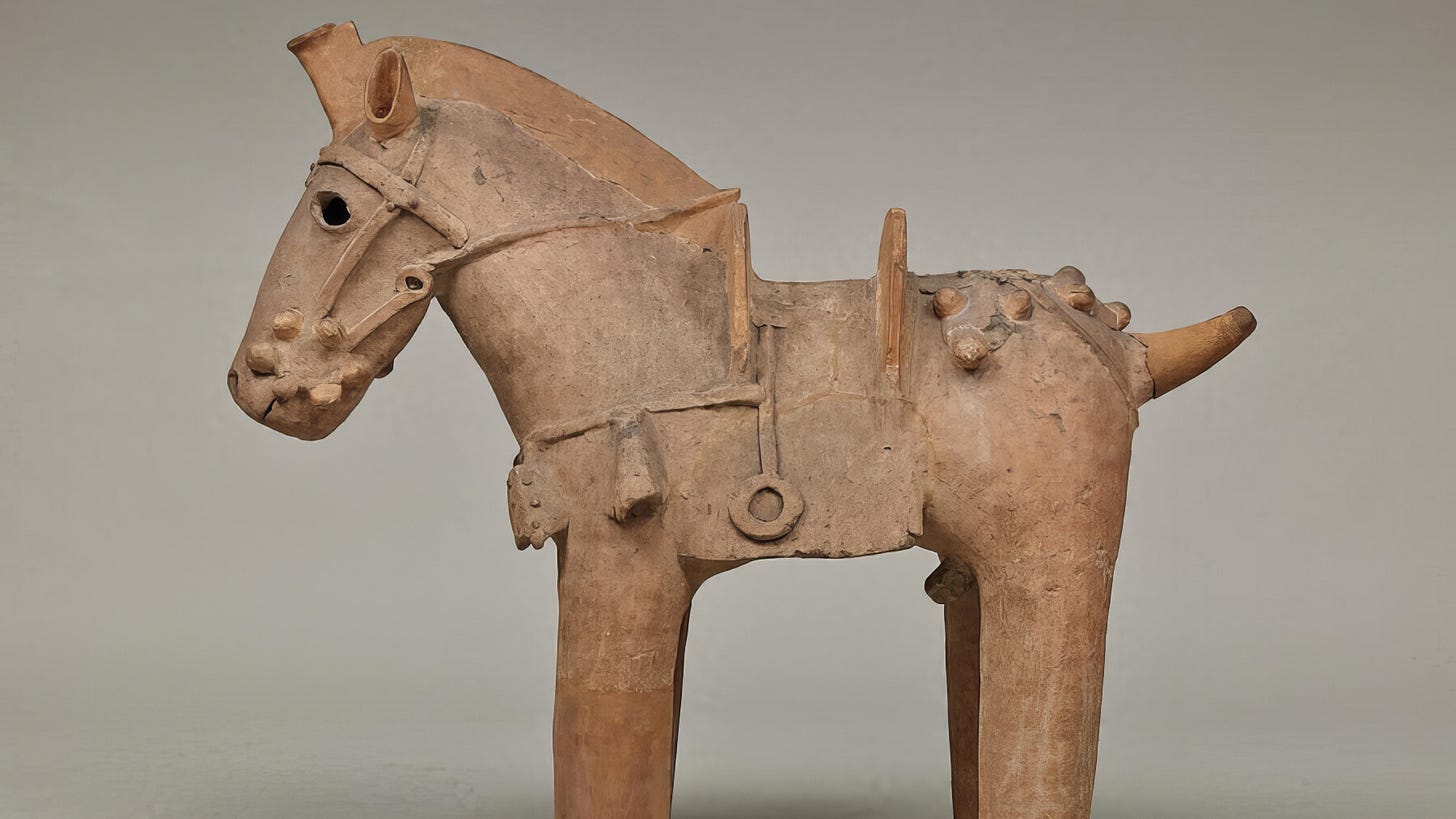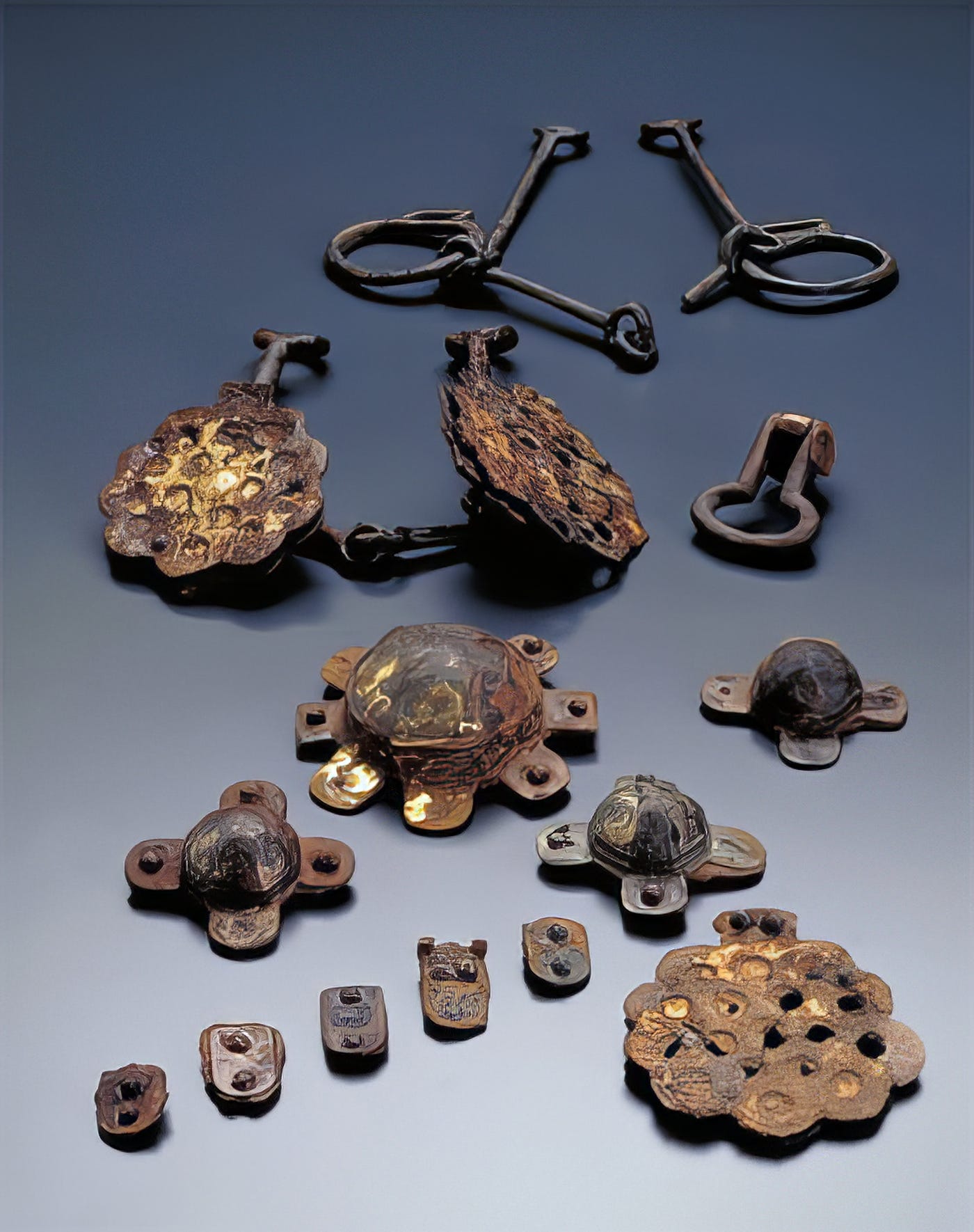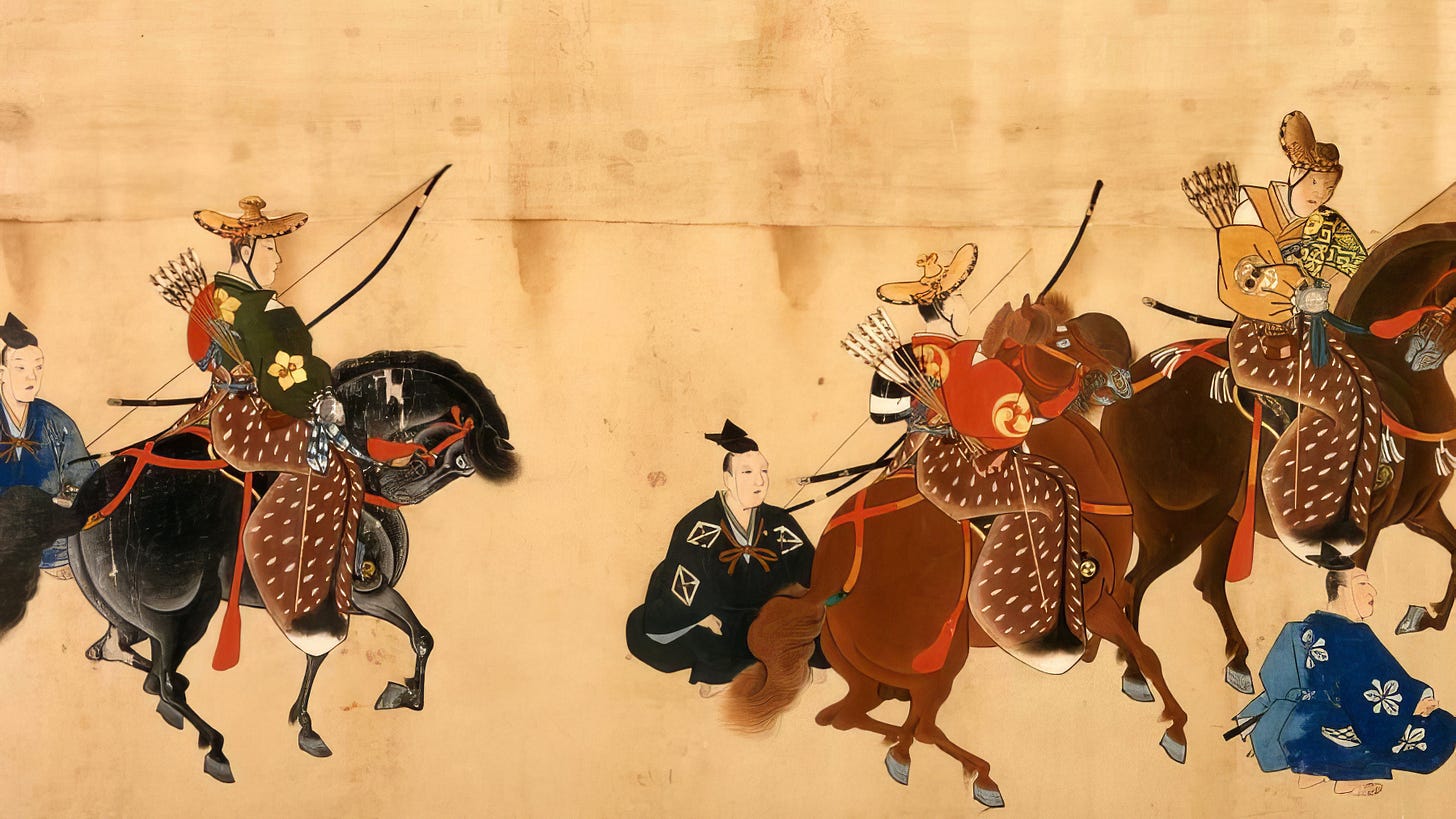When Horses Arrived in Japan and Changed Everything
Foreign Riders, Warfare, and the Birth of a New Order
The relationship between samurai and horses has once again attracted global attention, particularly with the renewed popularity of works like Shōgun. Many assume that horses have been present in Japan since ancient times, but modern research suggests otherwise. Horses were not indigenous to Japan; instead, they were introduced by foreign settlers. This event marked a turning point in Japanese history, reshaping warfare, governance, and cultural practices. So when did horses first arrive in Japan, and how did they become an essential part of society?
Currently, there is no definitive evidence that horses existed in Japan during the Jomon period (c. 14,000–300 BCE) or the Yayoi period (c. 300 BCE–250 CE). However, some discoveries suggest that equines may have briefly lived on the archipelago in prehistoric times. One notable example is the discovery of a small horse tooth in a geological layer dating back approximately 28,000 years. This suggests that horses may have once roamed Japan when it was still connected to the Eurasian continent during the Ice Age. However, these early horses are believed to have gone extinct long before human civilization took shape in Japan.
The earliest written records mentioning horses in Japan do not come from Japan itself but from historical Chinese sources. Since Japan had no writing system at the time, external records provide the only clues. One of the most important references comes from the Records of Wei: Account of the Wa People (Wei Zhi Woren Zhuan, 魏志倭人伝), a 3rd-century Chinese chronicle describing Japan. This document explicitly states that when Chinese envoys visited Japan, they observed that “there were no horses or cattle in the land of Wa” (the ancient Chinese name for Japan).
This statement has been widely debated. Some argue that it only describes a limited region of Japan and does not conclusively prove that horses were absent throughout the archipelago. However, 20th-century archaeological research has reinforced the claim. Excavations at Jomon and Yayoi sites have yet to produce any evidence of horses, such as bones, hoof prints, or horse-related artifacts. Additionally, DNA analysis in the 21st century has confirmed that Japan’s native horse breeds did not originate from these early periods. If horses were absent in prehistoric Japan, then when and how did they arrive? The answer lies in the enigmatic 5th century.
As Japan transitioned from the Yayoi period to the Kofun period (c. 250–538 CE), dramatic changes took place in its society. One of the most significant shifts was the sudden appearance of horses. Unlike earlier eras, Kofun-period archaeological sites provide abundant evidence of horses, including skeletal remains and horse-related artifacts. Excavations have uncovered horse tack and harnesses dating back to the late 4th and early 5th centuries. Over 1,200 sites across Japan contain such artifacts, with a particularly high concentration in Kyushu, the region closest to the Korean Peninsula. From there, horses gradually spread to the Kanto, Kansai, and Chugoku regions.
By the late 5th century, horses had become so important that they were depicted in haniwa (埴輪)—clay figurines traditionally placed around burial mounds to accompany the deceased. Among these, horse-shaped haniwa (馬形埴輪) became increasingly common in the 6th century, reflecting the growing significance of horses in warfare, social hierarchy, and religious practices.
Over 300 archaeological sites across Japan have yielded horse-shaped haniwa, with the majority found in the Kanto region. These findings suggest that horses were introduced to Japan via the Korean Peninsula during the 5th century and quickly became a fundamental part of society.
Japan’s oldest written historical text, the Nihon Shoki (日本書紀, Chronicles of Japan, 720 CE), includes a passage stating that in the 3rd century, Empress Jingū (神功皇后) received horses from Silla, a kingdom in ancient Korea. However, modern historians question the historical accuracy of this claim, as Empress Jingū’s existence remains largely legendary. The first more reliable mention of horses in the Nihon Shoki appears in the late 5th century, at which point the Yamato court—the ruling power of early Japan—had already begun breeding horses. By 554 CE, Japan had developed its own horse supply to such an extent that the Yamato court promised to send “1,000 soldiers and 100 horses” to aid its ally, Baekje (百済), another Korean kingdom.
Remarkably, within just a century, Japan transitioned from a society without horses to one capable of exporting them for military purposes. This rapid adoption highlights the transformative impact that the introduction of horses had on warfare, transportation, and governance. Horses also became deeply embedded in religious and cultural traditions. By the 6th century, they were already being used in Shinto rituals, a practice that continues today in the form of yabusame (流鏑馬), a traditional horseback archery ceremony.
These changes accelerated further in the 8th century. As Japan developed a centralized government influenced by Chinese administrative models, the imperial court designated officials responsible for horse breeding and military logistics. This system extended beyond the capital to surrounding regions, including the Kanto area. By 718 CE, records indicate that northeastern tribes were offering horses as tribute to the imperial court. This period laid the foundation for Japan’s military structure, and the role of horses in warfare became increasingly prominent. Eventually, this tradition would evolve into the cavalry-based samurai culture that defined medieval Japan.
From a historical perspective, it is now widely accepted that horses were not native to Japan but were introduced by foreign settlers. This raises another critical question: who were these people who brought horses to Japan? Before the 5th century, the archipelago was primarily inhabited by the indigenous Jomon and early Yayoi people. However, during the Kofun period, a new ruling class emerged, bringing with them advanced military technology, including horseback riding and iron weapons.
Archaeological evidence suggests that these newcomers were part of a larger wave of migration from the Korean Peninsula and northern China. Their military advantage—combining cavalry tactics and iron weaponry—allowed them to establish dominance over the existing populations. The cultural and political shift they triggered would permanently shape Japan’s history. While much remains unknown about this transition, studying the Kofun period provides crucial insights into how Japan transformed into a centralized, militarized state.
Horses were not just a means of transportation or symbols of power; they were agents of profound societal change. The introduction of horses revolutionized warfare, reshaped political structures, and influenced cultural traditions that continue to this day. The story of their arrival is not just about animals—it is about the people who brought them and the world they built. Understanding this moment in history helps us appreciate the far-reaching impact of foreign influences on Japan’s development. The horse, a foreign visitor to the archipelago, became one of the defining forces behind the rise of the samurai and the transformation of Japanese civilization.








